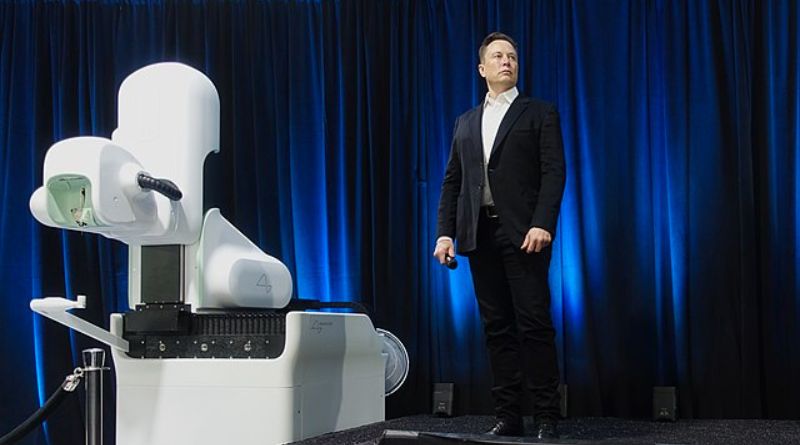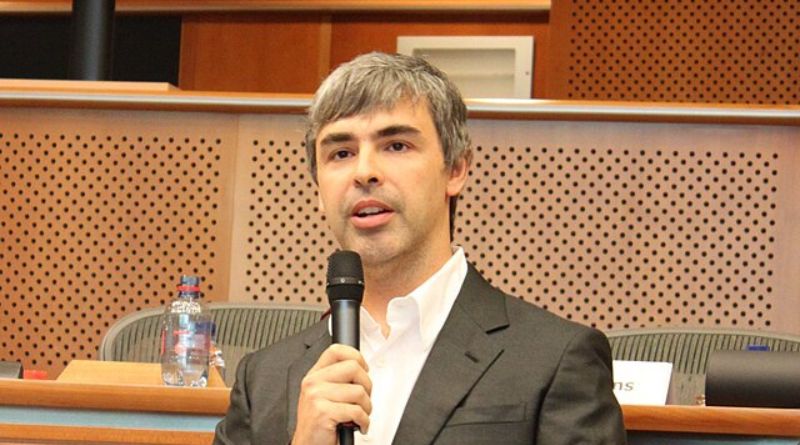
From tech moguls to luxury brand owners and investment gurus, the world’s wealthiest individuals sit atop staggering piles of assets. But how exactly did these people accrue such vast fortunes, making them the richest in the world?
Their rags to riches stories reveal common threads – relentless drive, bold risk-taking, industry foresight, and serendipity. Yet each billionaire charted their own unique path filled with setbacks and triumphs.
By examining both the luminaries and lesser-known names on global rich lists, we gain fascinating insight into the myriad ways to amass extreme wealth.
Jeff Bezos – Amazon’s Treasure Chest

Topping the richest-people charts for years, Jeff Bezos has accumulated an almost unfathomable $177 billion net worth (per Forbes). It all began modestly in 1994 when the Princeton grad quit his Wall Street job to sell books online.
Working from his Seattle garage, Bezos steadily built Amazon into the world’s largest online retailer. Going public just three years after launch, the company soared in value as ecommerce boomed.
Bezos’ genius was realizing the power of scale and customer obsession early on. Relentlessly reinvesting profits to expand selection, service and speed, Amazon came to dominate global retail. The 2006 launch of cloud computing behemoth AWS then supercharged growth even further.
Owning 11% of Amazon shares continues driving Bezos’ extreme wealth higher each year through stock gains. He also owns other valuable assets like the Washington Post newspaper and his aerospace company Blue Origin.
Key Takeaways:
- Had the long-term vision to see ecommerce and cloud computing potential
- Reinvested continually to reach massive scale quickly
- Maintained focus on customer satisfaction above profits
- Diligently built multiple high-growth businesses: Amazon, AWS, Blue Origin
Elon Musk – PayPal Payout Propels Diverse Ventures

Although a serial entrepreneur, Elon Musk first struck riches cofounding and selling Paypal to eBay for $1.5 billion in 2002. He netted around $250 million personally.
Unlike most, Musk then reinvested nearly everything into his new space exploration firm SpaceX and electric vehicle maker Tesla Motors. Enduring near bankruptcy, the gutsy gambles eventually paid off enormously.
Tesla went public in 2010 before surging over 1200% the past 5 years alone. Meanwhile SpaceX became the world’s dominant commercial launch provider with NASA contracts. Musk likely now owns over $150 billion in highly valuable stakes.
The South African native also helms tunneling enterprise The Boring Company and founded OpenAI/Neuralink to expand artificial intelligence capabilities. Possessing epic business ambition matched with hardcore work ethic, Musk seems destined to keep accumulating zeros.
Key Takeaways:
- Created multiple billion-dollar companies: Zip2, X.com/PayPal, SpaceX, Tesla, Neuralink
- Boldly invested nearly entire windfall into SpaceX and Tesla, risking everything
- Overcame near disasters before later skyrocketing valuations
- Possesses inexhaustible drive to build/invent businesses impacting humanity
Bill Gates – Software Sultan Turned Philanthropist

For over 20 years, Bill Gates sat atop the wealthiest individuals list. Though now worth a “paltry” $129 billion, he remains among the world’s richest through Microsoft fortune.
Gates dropped out of Harvard in 1975 to cofound Microsoft and code early software. Maintaining significant ownership stake, his net worth exploded throughout the 1990s dot-com boom to peak around $100 billion.
Although no longer involved operationally, Gates still owns about 1% of Microsoft shares – roughly $26 billion value. He diversified into other investments like Canadian National Railway, AutoNation, Four Seasons Hotels through his Cascade Investment LLC over the decades too.
Stepping away from Microsoft in 2008, Gates now focuses intently on philanthropy. He’s donated over $50 billion to the Bill & Melinda Gates Foundation championing global health/development, education and equality causes.
Key Takeaways:
- Had vision to see mass software commercial potential early on, dominating OS market
- Maintained strategic control and ownership stake in Microsoft as valuation soared
- Diversified investments into wide array of other companies to drive wealth higher
- Donated over $50 billion to date, record setting charitable impact
Warren Buffett – Investing Icon Amasses Massive Wealth

Revered as the greatest investor ever, Warren Buffett worked his way onto global rich lists by generating 20%+ annual gains for decades. His Berkshire Hathaway became one of the most valuable public companies ever.
His fortune, worth about $118 billion today, comes almost entirely from owning 36% of Berkshire Hathaway shares. Buffett has never sold a single share. Berkshire wholly owns many businesses like GEICO, Dairy Queen, Fruit of the Loom and BNSF Railroad too.
From modest beginnings in Omaha, Buffett displayed a supreme aptitude for value investing early on. He analyzed thousands of companies’ financials to invest in those trading significantly below intrinsic worth – proven massively profitable over 60+ years.
Now 91 years old, the Oracle of Omaha has pledged giving away 99% of his wealth. So far he’s donated over $45 billion primarily to the Gates Foundation and four Buffett family charities.
Key Takeaways
- Displayed genius-level talent for evaluating companies’ valuations early on
- Committed to value investing strategy despite periods of underperformance
- Took strategic control of companies with savvy management oversight
- Plans to donate over 99% of his net worth to philanthropic causes
Bernard Arnault – Luxury Tycoon Richer Than Ever

Ultra-discreet Bernard Arnault largely avoids public attention despite leading the world’s largest luxury conglomerate LVMH. His net worth recently soared to $177 billion making him the first European to ever top billionaire rankings.
Initially working for his family’s construction firm Ferret-Savinel, Arnault invested in struggling luxury brand Christian Dior in the mid-1980s. Expanding through additional fashion house purchases like Louis Vuitton and Celine, he built the global giant LVMH we know today.
Arnault pioneered the consolidation of independent luxury brands under one parent company. LVMH now owns 75 distinct brands including Bulgari, Moet Chandon, Hennessy, Marc Jacobs, Sephora and Tiffany & Co. among others.
The Paris-based magnate focuses intently on creativity and innovation to drive profits. Arnault also groom his five children to lead the next generation of LVMH’s success. Despite challenges like recessions and pandemics, LVMH generates over $60 billion in annual revenue today.
Key Takeaways
- Recognized early potential in consolidating struggling high-end brands
- Built LVMH into the world’s largest luxury group through decades of acquisitions
- Prioritizes creativity, craftsmanship and exclusivity across brands
- Successfully passed company stewardship to next generation
Larry Page – Google Riches Fund Passion Projects

Google cofounder Larry Page helped unlock today’s era of ubiquitous internet usage – and reaped enormous wealth too.
Page foresaw early how organizing the swelling sea of online information could prove extremely valuable. Teaming up with Sergey Brin at Stanford in 1996, they formed the seed of what became the Google search engine.
Initially created as a university research project, Google perfected the search relevance algorithms and interface. By monetizing with targeted text ads and later diversifying into YouTube, Android, Cloud and more, Google’s enterprise boomed.
Despite stepping away from daily management in 2019, Page still owns billions in controlling voting shares. This Google fortune continues growing his net worth well over $100 billion alongside other tech investments.
Page channels funds into ‘moonshots’ like flying cars and curing diseases via Kitty Hawk, Planetary Resources and Calico companies. Ever the visionary idealist, his quiet philanthropy also advances renewable energy adoption worldwide.
Key Takeaways
- Envisioned how an optimized search engine could prove incredibly valuable
- Led Google to dominate global search before profitably expanding into other services
- Maintained significant controlling interest despite departing daily operations
- Invests wealth into ambitious humanitarian and technology moonshot projects
Sergey Brin – Google CoFounder Turned Investor

Along with Larry Page, fellow Stanford PhD student Sergey Brin helped develop the world’s most used search portal – and become fabulously rich too.
Together they created the initial Google algorithm that outperformed existing search engines in the late 90s. Forming the company shortly after in Susan Wojcicki’s garage, Brin focused on the essential search tech and data analytics.
As Google grew to command over 90% market share, Brin and Larry became billionaires overnight when Google went public in 2004. The stock has soared over 1000% since, propelling his personal fortune north of $95 billion.
Though taking a backseat in management like Page, Brin still oversees Google’s tech developments and key initiatives. This includes their ambitious anti-aging biotech venture Calico.
The serial entrepreneur also invests heavily into space tourism firm Space Adventures as well into Tesla electric cars early on. Brin even co-owns a Major League Soccer team.
Fundamentally though, Sergey Brin relishes simply pushing technology advancements further. Whether Google glass, self-driving cars or AI, he lives on the cutting edge pursuing what fascinates him.
Key Takeaways
- Together with Larry Page created the essential algorithms behind Google search
- Maintained large ownership stake as Google grew to be tech titan over 25+ years
- Invests his formidable wealth into other bleeding edge technologies
- Prioritizes pursuing interesting innovations over profits
Steve Ballmer – Microsoft Fortune Fuels Sports Passion

For many years, enthusiastic CEO Steve Ballmer helped drive Microsoft’s absolute software dominance to new heights after Bill Gates stepped away. Leading desktop OS and enterprise software products propelled profits skyward in the early 2000s, which multiplied Ballmer’s vast wealth.
Owning significant company shares from being Microsoft’s first business manager and 30th employee, Ballmer eventually amassed around $100 billion primarily in stock.
Since retiring from Microsoft leadership after 34 years in 2014 (succeeding Nadella), Ballmer channelled his riches into owning the NBA’s Los Angeles Clippers franchise, his one true passion. Purchasing the team for a record $2 billion in 2014, he’s since increased their value considerably while transforming fan experiences.
Ballmer also directs philanthropic efforts into improving economic mobility for disadvantaged children and families via USAFacts and Ballmer Group nonprofits. Still, sports ownership remains his post-Microsoft priority.
Key Takeaways
- Was critical in Microsoft’s massive growth spurt in the 80s and 90s
- Maintained large equity stake which ballooned into $100B+ fortune
- Retired to purchase LA Clippers, his dream sports franchise
- Invests in charitable initiatives around poverty and civic data
The world’s wealthiest person year to year changes frequently, often in dramatic crypto-fueled fashion. But common threads underpin nearly all – fierce determination, calculated risk tolerance and an entrepreneurial spirit.
While brimming bank accounts capture public attention, many leading billionaires like Gates now direct their vast resources toward humanitarian efforts instead.
So dreams of extreme wealth need not merely be self-serving. With conscientious planning and ethics guiding decisions, amassed fortunes can profoundly better communities, societies and the world at large for generations to come.



